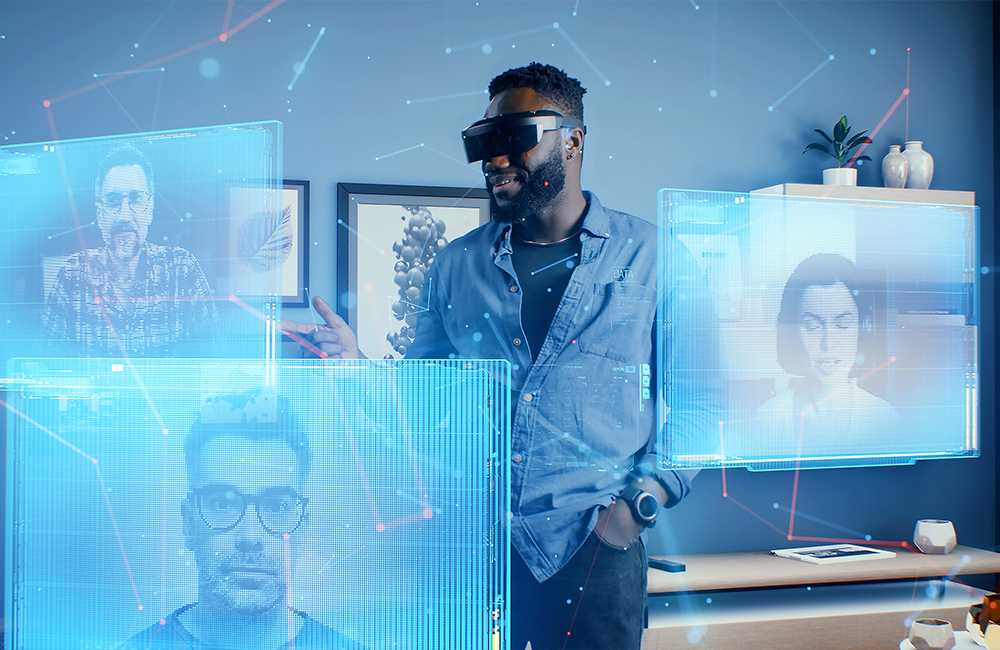3 Innovative AV Solutions That Are Driving Today’s Events
The audio-video industry’s history is rich with innovations. Over centuries of invention and experimentation, we’ve reached a point in human history with a remarkable capacity for communication. Even the earliest AV pioneers couldn’t have anticipated that one day, with the touch of a button, we could connect with audiences worldwide. Still, events AV has undergone unprecedented levels of change in the last two years. Today, we’re looking at some of the innovative AV solutions that have emerged and how they’re changing the events industry.
AV Solutions for More Engaging Hybrid Events
While hybrid events have been around almost as long as live-streaming technologies, their relevance has spiked in recent years. This is because hybrid events make events more accessible by catering to both in-person and virtual audiences. As Forbes notes, “Pandemic or no pandemic, running an event as a hybrid event—taking place both virtually and in-person—or offering a virtual ‘digital twin’ of an in-person event, instantly makes it more accessible.”
However, in the past, it’s been challenging to translate the experience of a live event into digital platforms. After all, it’s hard for virtual attendees to experience an immersive live event when they’re staring at a screen. During the early days of the pandemic, event professionals scrambled to take events virtual; a few AV solutions emerged that continue to elevate hybrid events today. One of hybrid events’ most significant challenges: seamlessly engaging both in-person and virtual audiences.
Interactive tools and digital event elements help level the playing field. For example, direct messaging, forums, polling, and interactive Q&A sessions ensure virtual attendees can engage and network with guest speakers alongside their in-person peers. Special effects or integrations like AR and VR can help replicate lighting and staging. And with recent advances in VR and fully digital event environments, we’re confident that hybrid events will only continue to evolve.
Tech Advances Supporting Asynchronous Events
We’re also seeing an increased interest in asynchronous or non-synchronized hybrid events. With asynchronous events, in-person and virtual events take place at different times. While at the outset, that might seem like twice the work, this event format removes many of the challenges of traditional hybrid events.
For example, asynchronous events side-step complications from various technical challenges and ensure that virtual attendees don’t miss out, even if they lack the internet speed to keep up with live-streamed events. Asynchronous events can also improve overall engagement by making materials available on-demand. Because attendees can view materials on their own timelines, pre-recorded and uploaded content generates more impactful conversations and allows audiences to offer feedback long after the event has ended.
The applications are especially notable for companies with global teams or teams in different time zones because these on-demand and customized experiences allow attendees to interact on their own timelines. For example, businesses can conduct a virtual town hall for employees in different cities or countries to come together across time and space.
While this type of content is still in the early stages, many experts feel that many events will soon run asynchronously. This AV solution attracts wider audiences, can keep distracted attendees engaged, and provides the flexibility people have adapted to in other aspects of their lives.
Augmented Reality (AR) For More Engaged Attendees
With recent advances in augmented reality technology and the rollout of 5G, high-quality augmented reality content is increasingly accessible. As a result, these AV solutions are perfectly poised to supercharge the events industry.
Holograms, 3D technology, and augmented reality are exciting AV solutions that first gained momentum in the entertainment industry. Now they’re beginning to make waves in corporate event spaces. For example, Microsoft’s HoloLens’s keynote speaker has the power to address audiences in different languages.
We also see AR being used more frequently in tradeshow and conference environments. For example, one innovative system projects directional arrows so that event attendees can get real-time recommendations on where to go next.
AR is also empowering a more “gamified” event environment. AR networking games help attendees network more effectively by providing a helpful icebreaker and sparking conversations around pre-determined topics.
Innovative AV Solutions for Live, Hybrid, and Virtual Events
For over 20 years, Tallen has been at the forefront of innovative AV solutions. We’re excited to take these AV industry trends and adapt them to meet our client’s needs. So whether you’re planning a live, hybrid, or virtual event, Tallen’s full-service event production teams can leverage these and countless other AV trends to help you deliver your message clearly. Get in touch to learn more about our capabilities!

